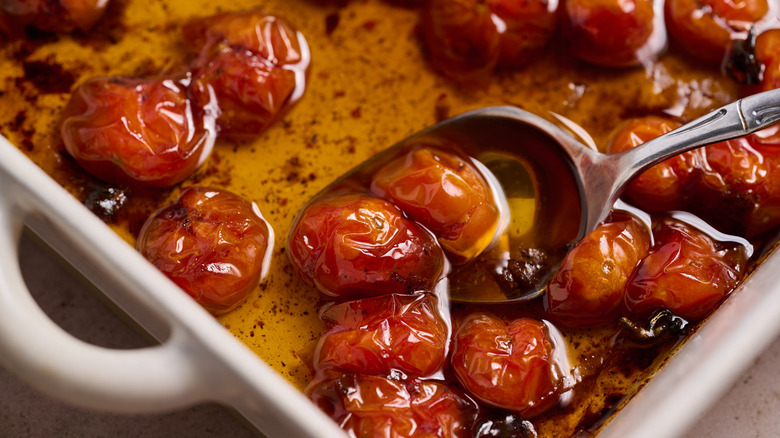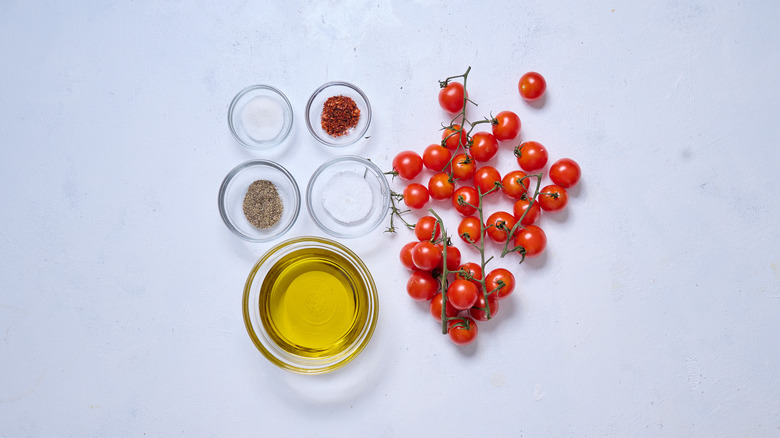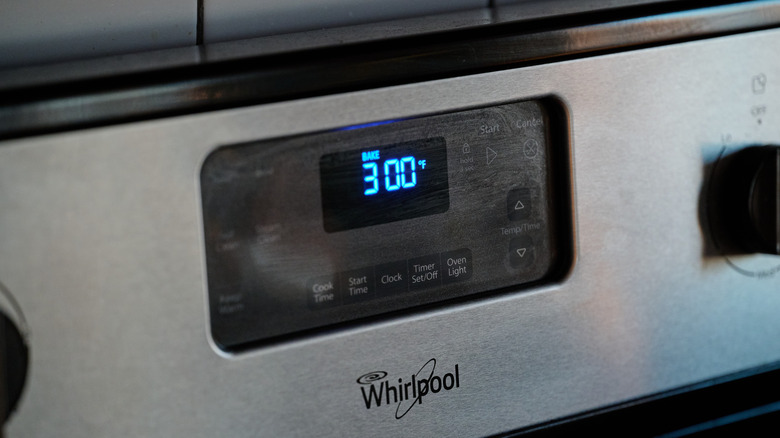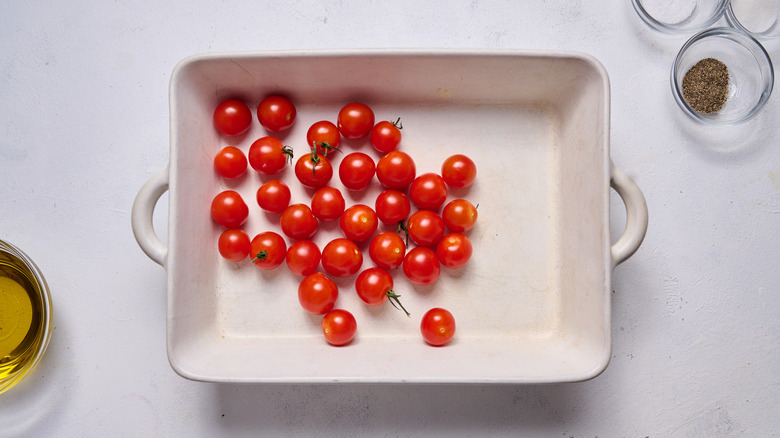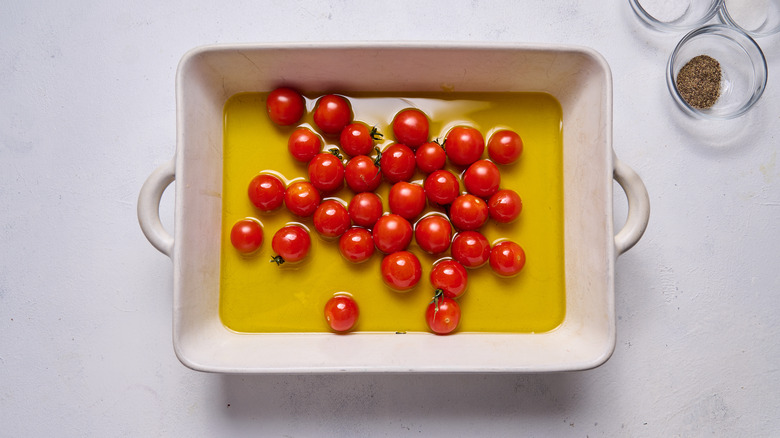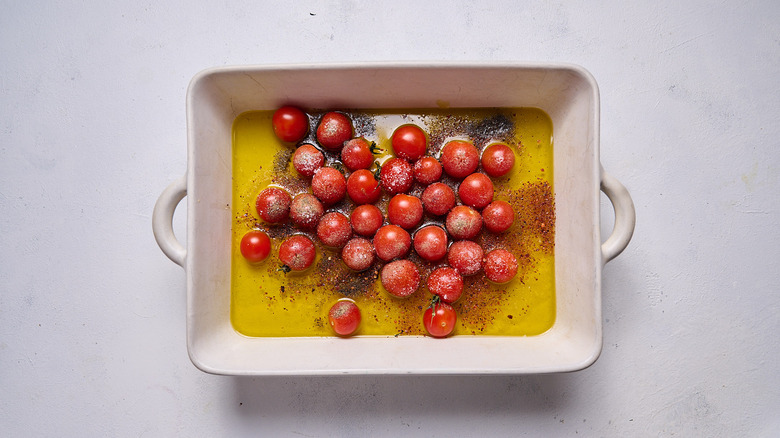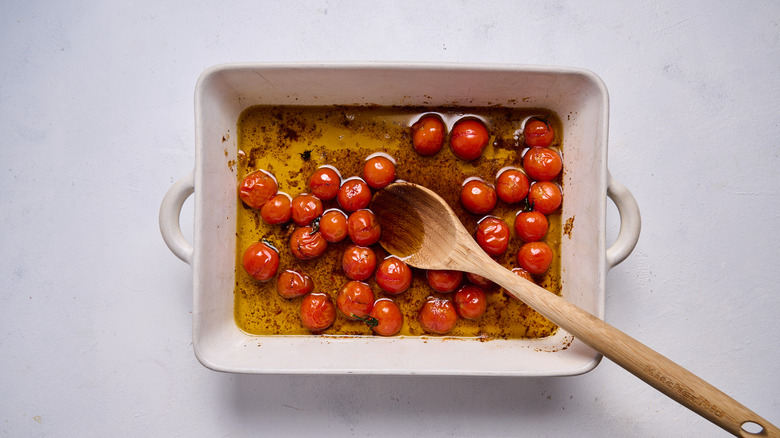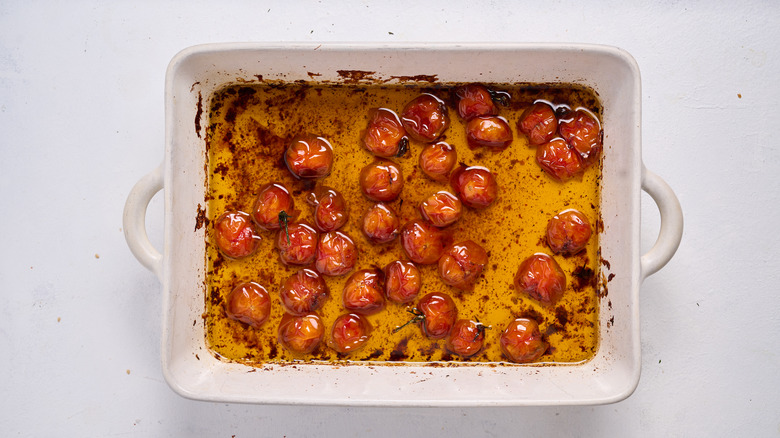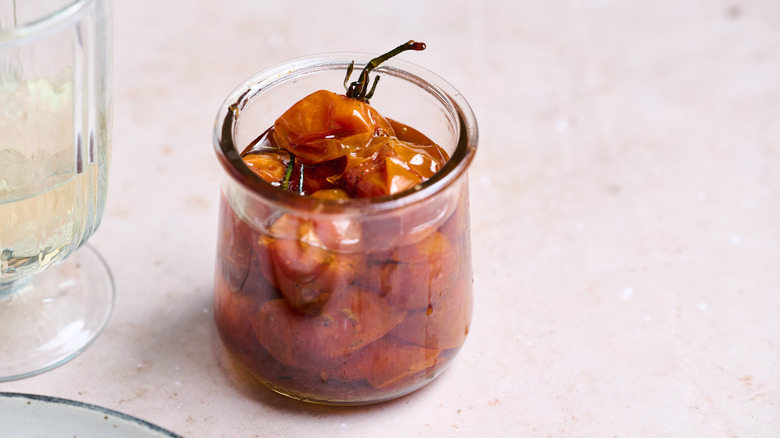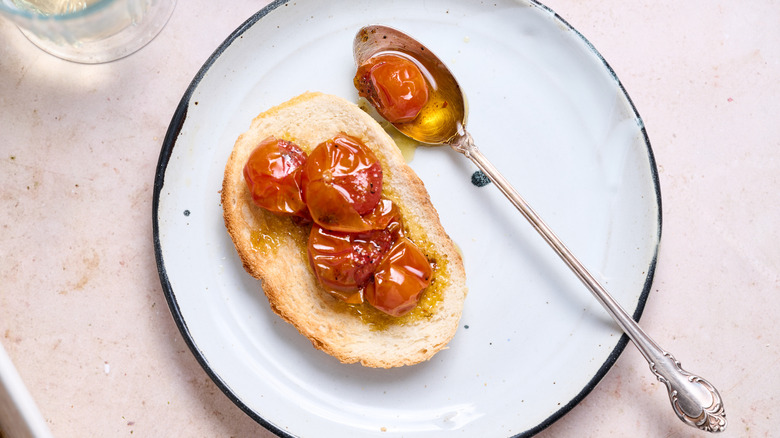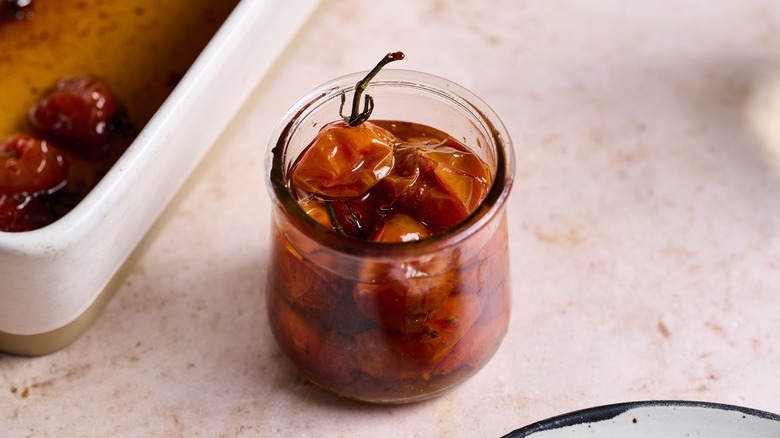Simple Flavor-Packed Tomato Confit Recipe
Since the dawn of time, humans have used intricate cooking techniques to preserve food well past what a refrigerator (or lack thereof) could do. In the case of confit, meats are cooked in fat at very low temperatures until they are impossibly tender, then stored in a jar and covered with the rendered fat. This is where we get the classic French duck confit, which is used in dishes like cassoulet.
Confit is not limited to meats, though, and can be used to preserve vegetables as well, creating a less acidic product than would result from the pickling process. In the case of garlic or tomatoes, confit tames the bite of strong raw garlic or raw tomato flavor, creating instead a jammy, buttery topping that has a wide variety of applications. It can be spread on toast, mixed with pasta, layered in a sandwich, or eaten by the spoonful straight from the jar. In this recipe written with developer Michelle McGlinn, cherry tomatoes are slowly roasted in a barely warm oven until soft and bursting. Combined with oil, sugar, and Aleppo pepper, the tomatoes caramelize into a sweet but spicy topping that is perfect for easy breakfasts and delicious dinners.
Gathering ingredients for simple flavor-packed tomato confit
For tomato confit, you'll need olive oil, salt, pepper, sugar, pepper flakes, and tomatoes. In a recipe this simple each flavor is important, so try to be specific with the pepper flakes and tomatoes, if you can. Aleppo pepper is coarsely ground and mild, with an earthy spicy flavor, but regular red pepper flakes will work as a substitute. When choosing tomatoes, we recommend small, firm cherry tomatoes, which can be left on the vine if desired. If you'd prefer to use tomatoes from your garden, use firm, ripe tomatoes that are small in size and slightly sweet.
Step 1: Preheat the oven
Preheat the oven to 300 F.
Step 2: Add the tomatoes to a dish
Spread the cherry tomatoes into a 9x11-inch or smaller baking dish.
Step 3: Cover in olive oil
Add the olive oil so that the tomatoes are covered halfway, adding extra if needed.
Step 4: Season the tomatoes
Stir the tomatoes with sugar, salt, pepper, and Aleppo pepper.
Step 5: Roast and stir
Roast for 30 minutes, then gently stir the tomatoes.
Step 6: Continue to roast the tomatoes
Roast for another 30 minutes, or until the tomatoes are very wrinkly and completely soft.
Step 7: Serve or store the confit
Serve warm or store in a sealable jar.
What can I use tomato confit for?
Tomato confit adds a burst of carmelized tomato flavor and spice anywhere it is used, and its applications are wide-ranging. It can be used as a condiment, a sauce, or a topping: It is probably most commonly used as a topping on crostini or toast. You can make a fast bruschetta by spreading the confit on crostini and sprinkling it with torn pieces of basil. Upgrade your avocado toast by spreading the confit over mashed avocado then topping with a sprinkling of parmesan cheese or feta. You can elevate eggs, salad, rice, or potatoes with a spoonful of tomato confit.
You can also use tomato confit as a substitute for pasta sauce if you stir the tender tomatoes and flavorful oil into cooked warm noodles for a glossy, light, saucy dressing. Add garlic for an extra burst of flavor or toss with grated parmesan for something richer and more textured. You can also spread the confit on pizza with any other toppings you love. Tomato confit is especially good when paired with soft cheeses like fresh mozzarella and baked feta. Spoon it over baked ricotta for an easy and satisfying appetizer that can be eaten with crackers. For a particularly delicious snack, spoon the tomatoes over burrata cheese seasoned with salt and pepper and spread on warm crusty bread.
How do I store tomato confit?
Confit is a method of preservation that allows food to be kept longer than usual at room temperature or cooler. Because of this, you can store the roasted tomatoes at room temperature for up to a month. To use this technique properly, be sure the tomatoes are covered in oil and the storage container is tightly closed and out of the sunlight.
If you'd rather preserve the tomatoes in a more modern way in the refrigerator, we recommend allowing them to come to room temperature before using. And even if you store them in the refrigerator, we recommend storing them with the oil rather than draining them and discarding the oil. In fact, we suggest that you never toss confit oil; not only because it would be a waste of expensive oil, but also because it is now infused with sweet tomato flavors and peppery spice. When you're finished with the confit tomatoes, strain the browned bits out of the oil, then store any excess in an airtight container at room temperature. Use this oil for salads, light pasta sauces, or for cooking meats and fish.
Simple Flavor-Packed Tomato Confit Recipe
In this simple recipe, we combine the best ingredients to create a versatile and flavorful tomato confit that can be used as a topping, condiment, or sauce.
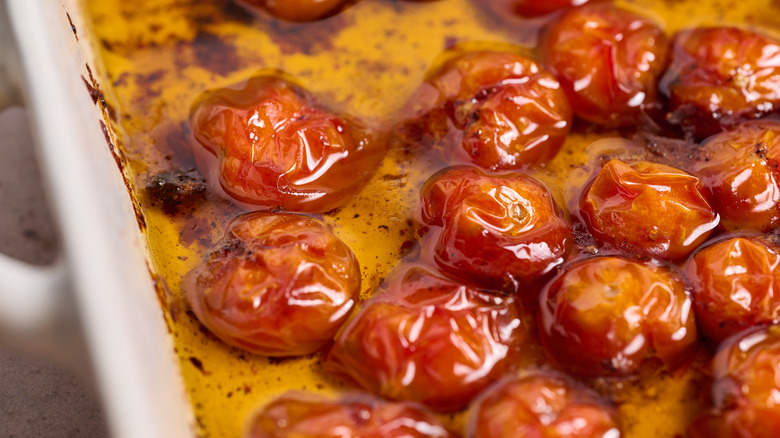
Ingredients
- 12 ounces cherry tomatoes (about 1 ½ cups)
- 2 cups extra virgin olive oil, or as needed
- 1 teaspoon granulated sugar
- 1 teaspoon salt
- 1 teaspoon pepper
- 1 teaspoon Aleppo pepper
Directions
- Preheat the oven to 300 F.
- Spread the cherry tomatoes into a 9x11-inch or smaller baking dish.
- Add the olive oil so that the tomatoes are covered halfway, adding extra if needed.
- Stir the tomatoes with sugar, salt, pepper, and Aleppo pepper.
- Roast for 30 minutes, then gently stir the tomatoes.
- Roast for another 30 minutes, or until the tomatoes are very wrinkly and completely soft.
- Serve warm or store in a sealable jar.
Nutrition
| Calories per Serving | 390 |
| Total Fat | 43.3 g |
| Saturated Fat | 6.0 g |
| Trans Fat | 0.0 g |
| Cholesterol | 0.0 mg |
| Total Carbohydrates | 1.8 g |
| Dietary Fiber | 0.5 g |
| Total Sugars | 1.1 g |
| Sodium | 163.8 mg |
| Protein | 0.3 g |
